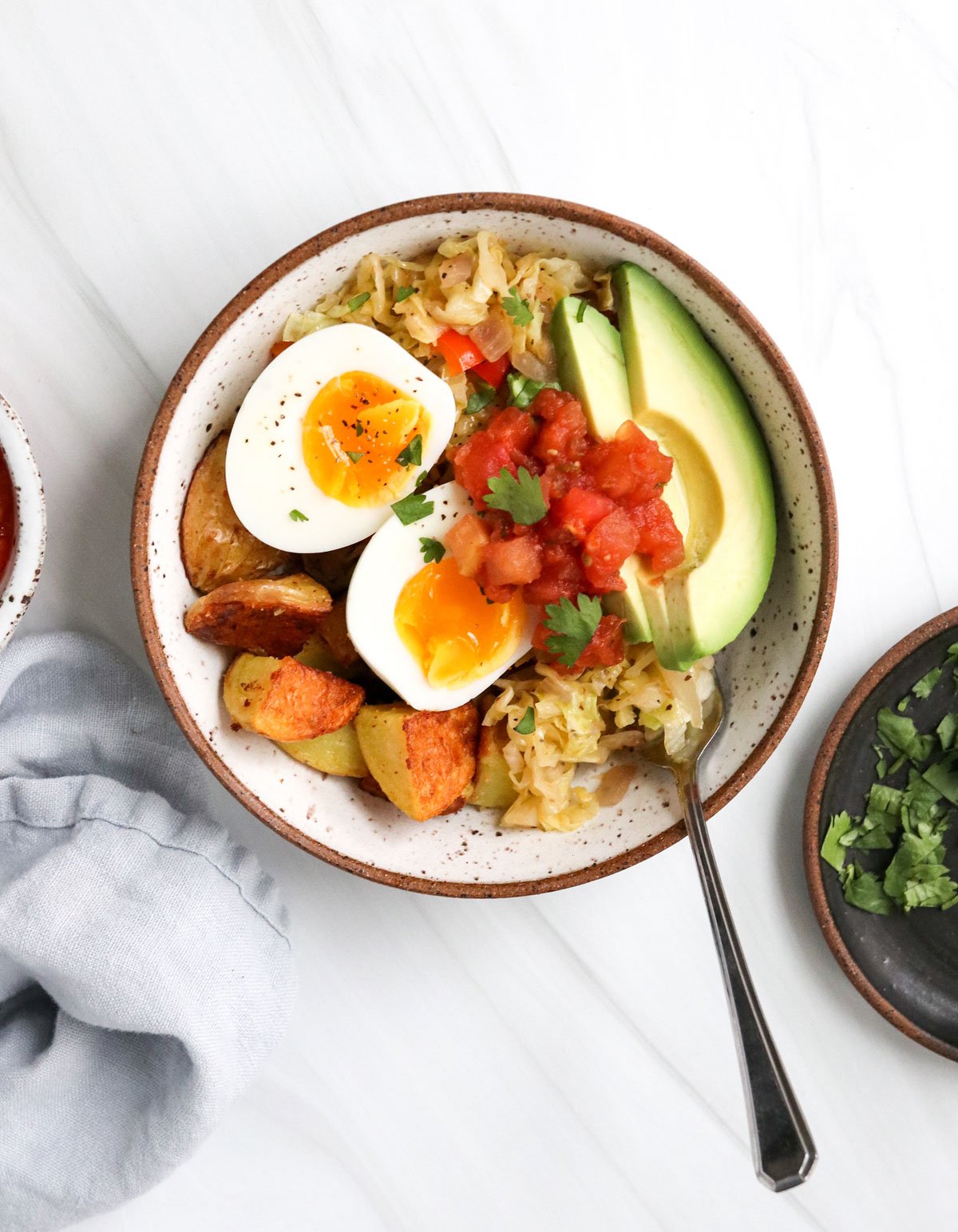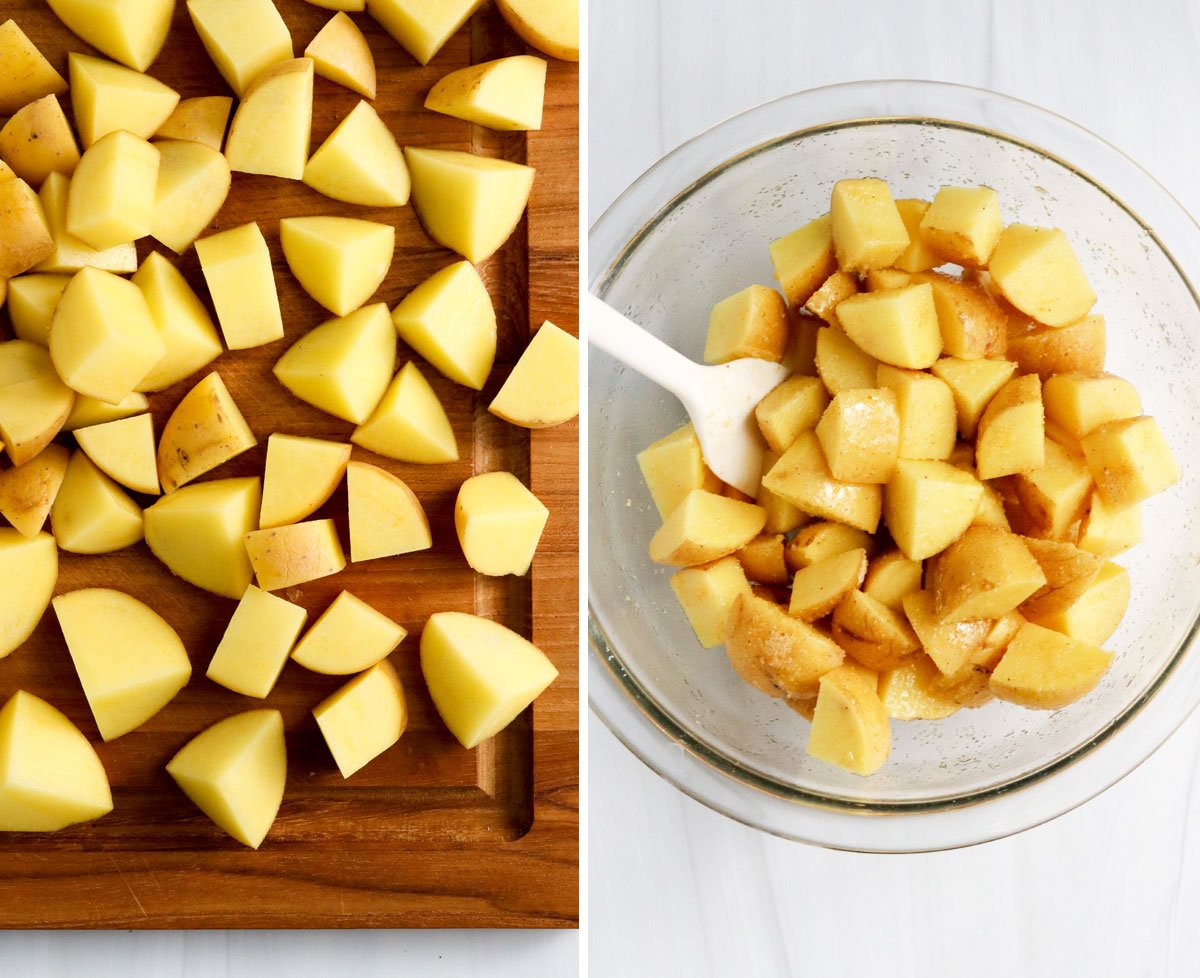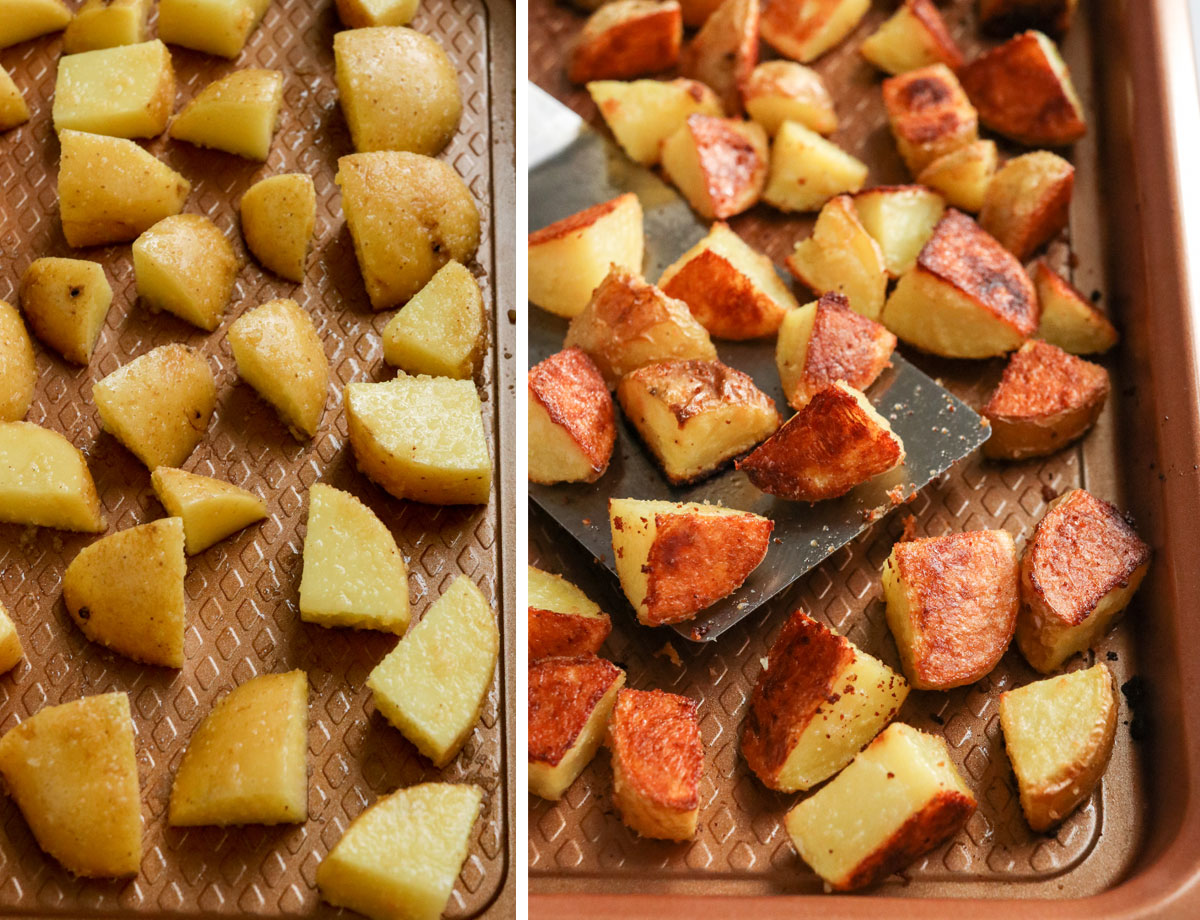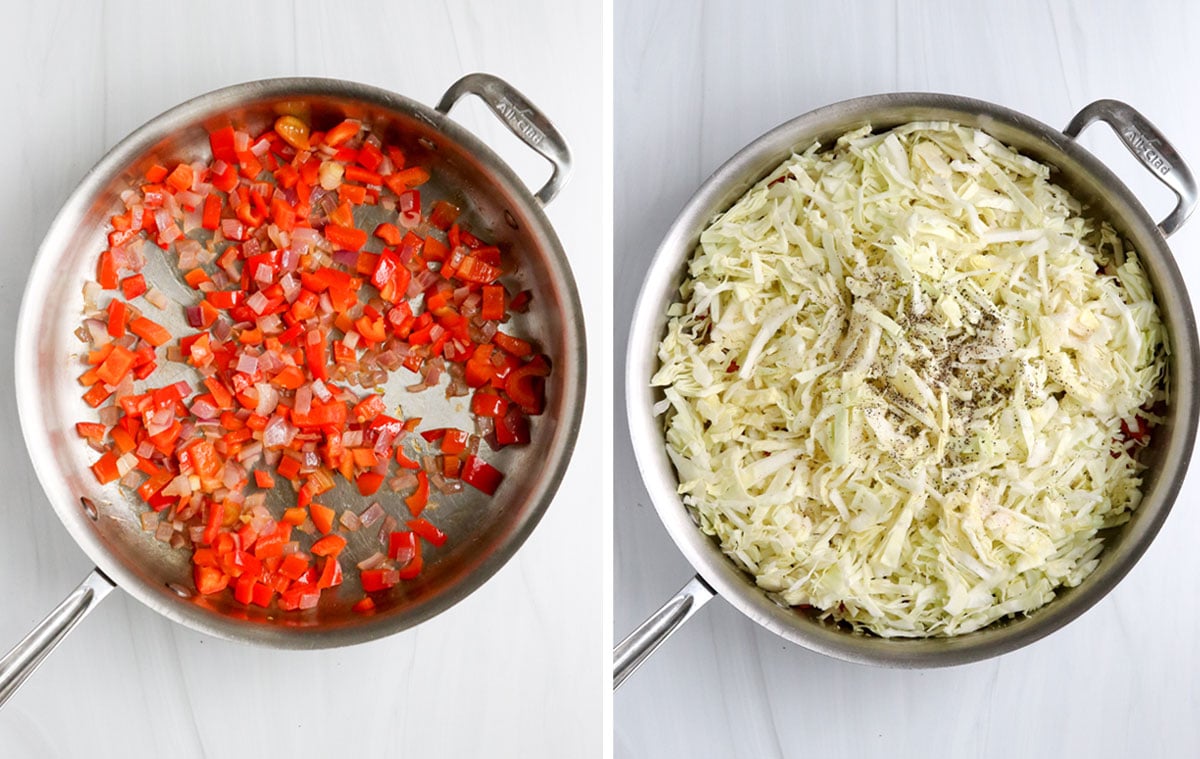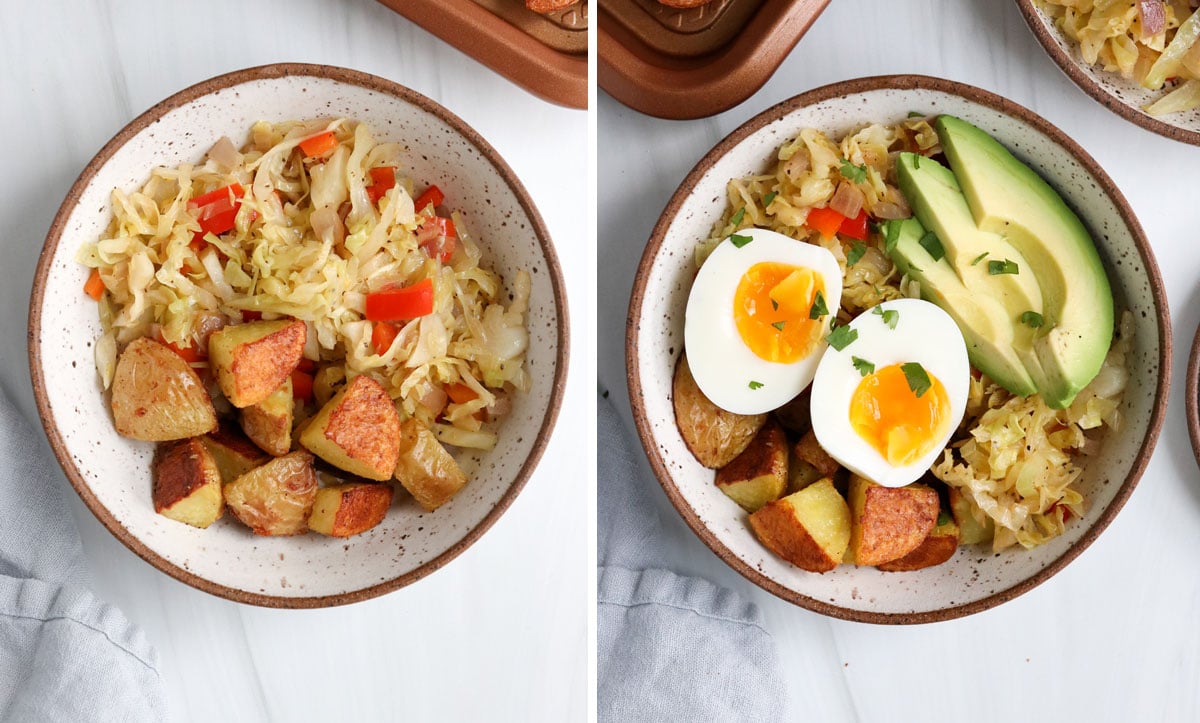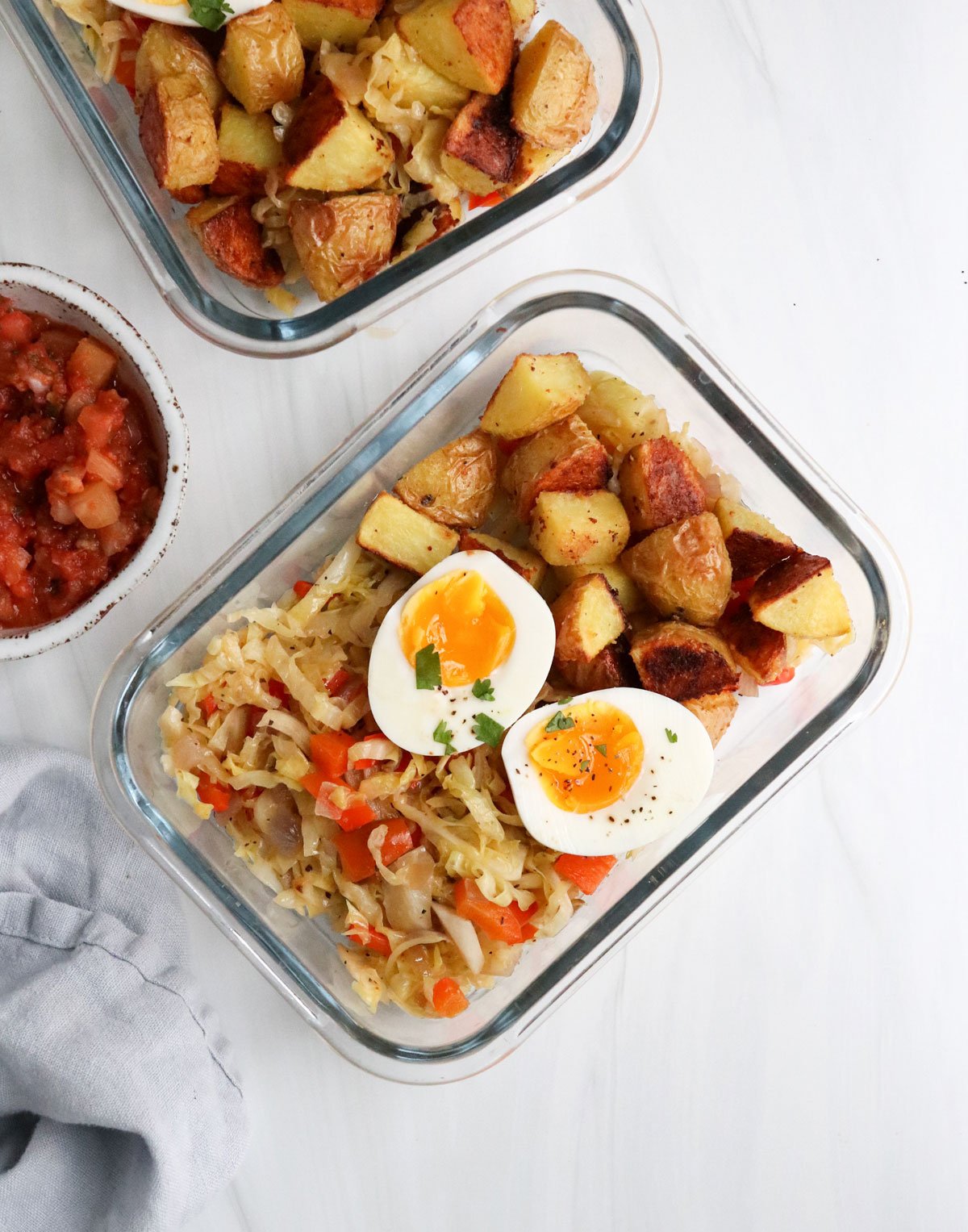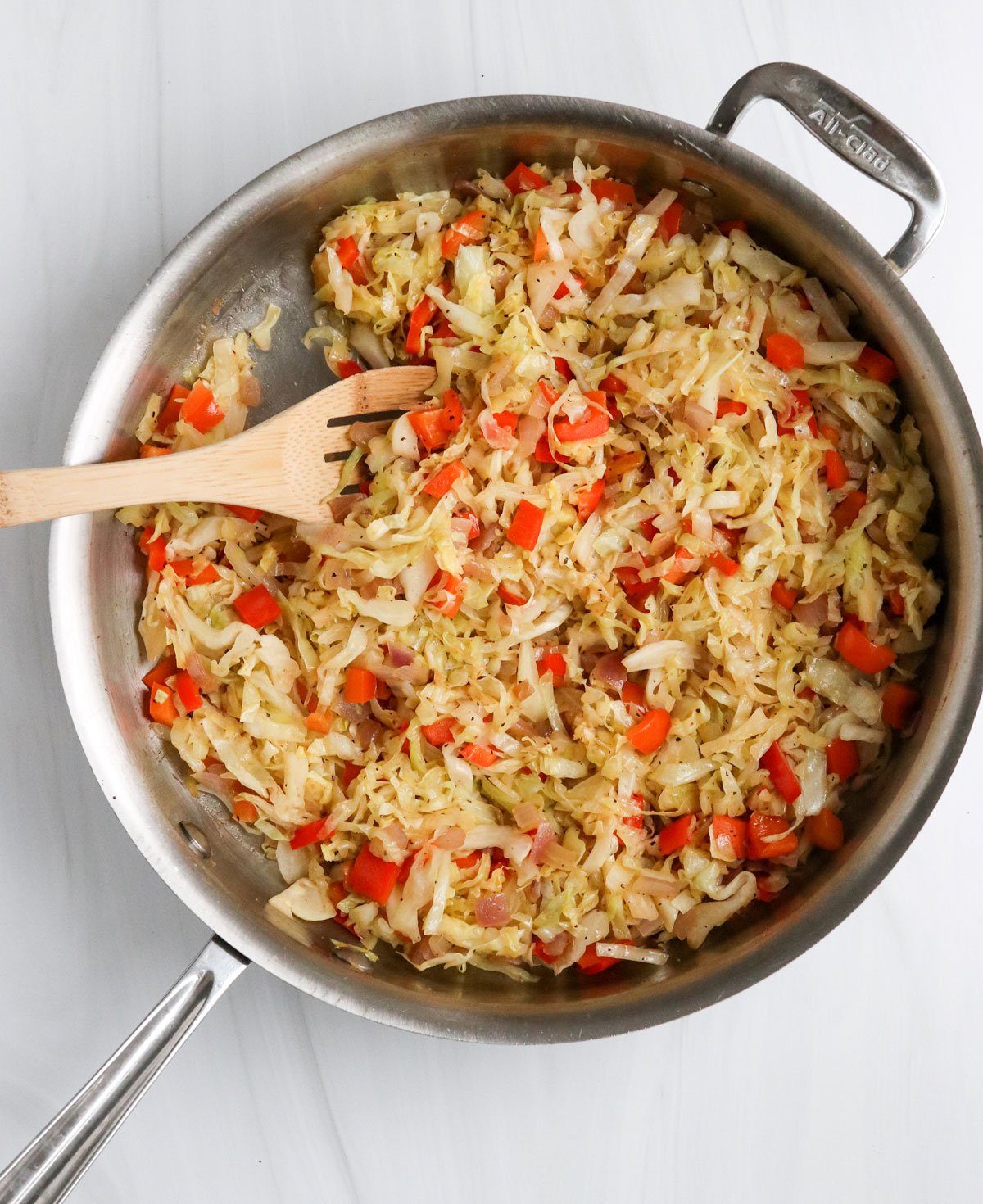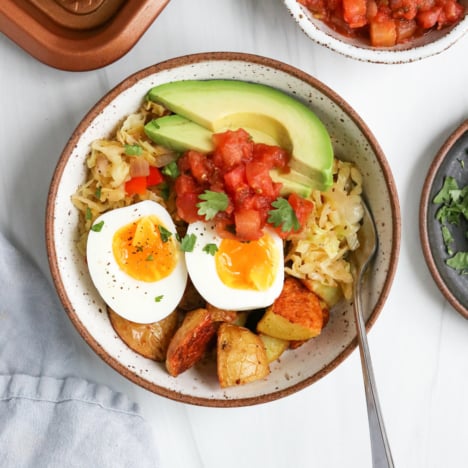This savory breakfast bowl is a great way to start your day with plenty of fiber and protein. Featuring roasted potatoes and sauteed veggies, they are easy to customize using what you have on hand. Following a special diet? You can leave off the eggs to make this vegan, or for a low carb & paleo bowl, you can skip the potatoes and enjoy the sauteed cabbage as a shredded hash brown alternative.
Ingredients You’ll Need
What is in a breakfast bowl?
Roasted potatoes Sauteed veggies Eggs (or scrambled tofu) Any extra toppings you like!
It’s common to see breakfast bowl recipes topped with cheese, avocado, green onions, or even salsa. You can also add in sausage or bacon to your sauteed veggies, if you like. Looking for more vegetarian protein? Try stirring in canned black beans to the sauteed veggies, and add a little garlic or hot sauce for extra flavor.
How to Make Breakfast Bowls
- Roast the potatoes. The potatoes take the longest to cook, so that’s what we’ll start with. Preheat the oven to 400ºF and slice the potatoes into 1-inch chunks. In a large bowl, toss the cut potatoes with olive oil, garlic powder, onion powder, and salt.
Spread the potatoes out on a rimmed baking sheet, and place them in the oven to bake for 30 minutes. Stir them halfway through the baking cycle, so they have the chance to get golden on more than one side. Pro Tip: Arrange the potatoes so that one of the flat, cut-sides of the potato is in direct contact with the pan. This will give you more golden results compared to the skin-side of the potato touching the pan. If you don’t flip the potatoes during the cooking cycle, one side will be much darker and crispier than the other sides.
Saute the vegetables. While the potatoes are roasting in the oven, add a tablespoon of olive oil to a large skillet. Saute the onion and bell pepper for about 3 minutes, just to soften them up. Add in the shredded cabbage, salt, and black pepper, and continue stirring until the cabbage wilts, about 8 to 10 more minutes. (Alternatively, you can use baby spinach, instead.)
Cook the eggs. You don’t have to use eggs if you’d like to make a vegan breakfast bowl (try adding cooked chickpeas or scrambled tofu for an egg-free protein), but if you do want to add them, I think it’s easiest to make hard boiled eggs as a meal prep option. Try Instant Pot hard boiled eggs, if you have a pressure cooker. (Be sure to place the eggs in ice water after cooking, so they don’t develop a green ring around the yolks.)
Alternatively, you can simply pan-fry eggs in the morning, when you’re ready to serve these breakfast bowls. They don’t take too long to cook, especially if you’re warming up the breakfast bowl ingredients at the same time. 4. Assemble. When the potatoes are fork-tender and the sauteed cabbage, peppers, and onions are done, the bowls are ready to assemble. You can use meal prep containers, if you’d like to make these ahead.
Start with a base of potatoes and sauteed veggies. I usually split this amount up into 4 servings. Top the warm veggies with a cooked egg or two, along with sliced avocado, your favorite cheese, and some salsa for extra flavor. You can also add fresh herbs, like chopped cilantro or chives. These healthy breakfast bowls can be stored in an airtight container in the fridge for up to 5 days. (Hard boiled eggs can actually be stored for up to 7 days, if you want to make extra for other uses.) When assembling these for meal prep, be sure to leave the avocado off, since that will turn brown over time. It’s easy to slice and add that right before serving!
How to Reheat Breakfast Bowls
If you’d like to prepare make-ahead breakfast bowls, store individual portions in an airtight container in the fridge. You can use a microwave to reheat these bowls, using 30-second intervals to make sure everything heats evenly, or you can toss everything into a skillet and stir for 3 to 5 minutes, until the veggies and potatoes are warm again. You can also eat these cold, if you’re really in a hurry, although I find cold potatoes to be a little disappointing texture-wise. On the bright side, cooked and then chilled starches, like potatoes, tend to have more resistant starch compared to warm, cooked potatoes. Resistant starch tends to reduce the caloric density of foods, and may also act as a prebiotic, feeding the good bacteria in your gut.
Which potatoes work best? I typically use Yukon Gold potatoes for this recipe, because they have a creamy interior and are a good source of antioxidants. Feel free to use sweet potatoes, red potatoes, or even shredded hash browns, instead. What else can you add to a breakfast bowl? Similar to other bowl-style meals, you can add a cooked grain, like quinoa or oatmeal, if you’d like these to feel extra-filling. You can also serve these fillings in a tortilla, for more of a breakfast taco or burrito. I hope you’ll enjoy this veggie-filled breakfast idea soon! If you try this breakfast bowl recipe, please leave a comment and star rating below letting me know how you like them.

